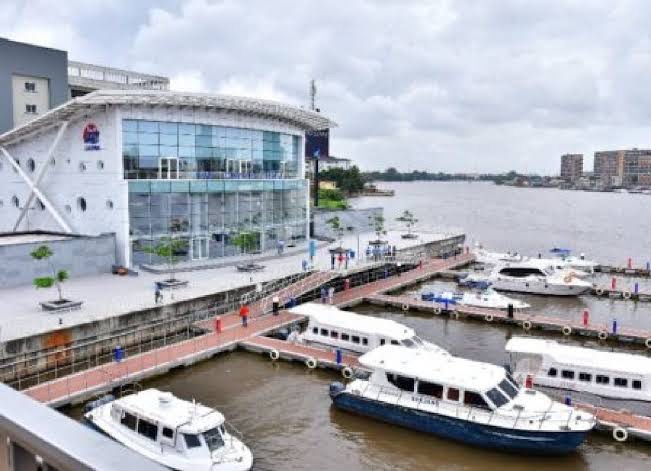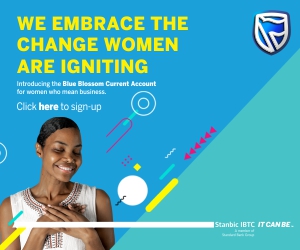GROpinion
Needless ethnic tension


By Muyiwa Akintunde
Given the tension that enveloped last Saturday’s election in some parts of Lagos, I am supposed to hate the Igbo. Right?
I’m sure my father, who died almost 45 years ago, would turn in his grave the day I nursed that evil thought. I never saw him hate anyone, his heart was consumed by love to all irrespective of where they came from.
He demonstrated this by deliberately sending his first surviving child – my now late older brother – to school in Warri. The young man would have travelled all the way to Sokoto had the admission to the Federal Government College in that Fulani city pulled through.
At the time my brother left Lagos for Federal Government College, Warri in January 1970, the civil war had just ended.
But my father had no qualms sending his son near the just ended theatre a 30-month war.
My brother returned home on his first holiday to tell us how the students lost count of corpses in FCC Warri’s vast compound. But that did not deter my dad from sending him back until he completed his five-year programme.
I would have travelled outside Lagos for secondary education too, but my mother cried to all who could pile pressure on her husband to dissuade him. She could not have her two children faraway from Lagos at the same time.
When it was time to get married, my brother chose a damsel from Urhoboland who he met while on audit assignment in Port Harcourt. The first time I led our family members from Lagos to Owhrode on the outskirt of Warri for my brother’s traditional marriage, there were complaints right from Ijebu-Ode that we were going too far. Each time I was asked if we were almost at our destination, I would respond with a mumbled “Yes!” Even as we couldn’t achieve our mission as my brother’s father-in-law insisted that he would not go ahead with the ceremony on account of a minor hitch, my brother still got us to do the visit again a year after.
My people, not being good travellers, had drummed it into my ears all the way to Warri and back that I must choose a wife from our ethnic region. My father didn’t groom me to limit my options on anything, even marriage.
Perhaps I would have been married to a charming Igbo young woman who I met in Ilorin and who remained my best female friend even to the envy of the woman I later tied the knots with. Anyone who knew me in Ilorin knew my girlfriend from Abia State. I also got to know her parents in their village. I had been sent on assignment to the newly created Abia State in 1991 and took time to deliver her message to her parents. We couldn’t deliver on marriage, but she remained my very good friend until one of the saddest days in my life – January 6, 2003. She died. Years later, the pains remain.
I’m supposed to hate the Igbo and perhaps other ethnic groups. My first job as a reporter (at The Guardian) was influenced and delivered by non-Yoruba at a time the newspapers had a Yoruba MD and deputy. Ayogu Eze, who would later become a Senator and now a governorship candidate in Enugu State, Emeka Izeze, Tommy Odemwingie and Amma Ogan were the arrowheads of those who believed I had done well enough as a freelance reporter and fought the long-drawn battle to have me employed at the Flagship.
When I decided to switch from journalism to public relations, two Nigerians outside my ethic area made that happen – Nn’emeka Maduegbuna and Mike Obiajulu Meze. And they provided me the push and encouragement to learn as much as I could.
Because she is Igbo, I am supposed to hate Chineze Amanfo, who gave me courage to dare and some briefs while she worked with a telecoms company. She was only my colleague at one of the PR agencies I had worked.
I’m supposed to hate Emma Okere, my best friend in my Ilorin years who himself got married to a Yoruba woman from the Kwara State capital. It was in Emma’s community in Ngor Okpala that I had the best of Ugba during my three-day visit to him in 1991.
I’m supposed to hate Emeka Ozumba who had stayed in my house in Lagos a few times when in transit. His wife too had been to our place, and recently when I had official trip to Enugu, Mrs Ozumba checked on me at the hotel I stayed, and I had to return the gesture by checking on the Ozumbas before returning to Lagos.
I’m supposed to hate James Eze, who, like Emeka, works with the Anambra State Governor and travelled from Awka to check on me the night I arrived Enugu during the said trip. He came back the next morning to spend quality time with me and deliver a gift I never expected.
Because he is Igbo, I should have no dealing with Okwudili (Okwy) Onyia, who visited my wife and I few years ago to announce his wedding to us and asked us to be the godparents.
I’m supposed to hate Isaac Umunna and Maureen Chigbo, who gave my son the opportunity to practice journalism just because of me.
I may not like his way, but MC Oluomo impressed me by inspiring a peace dialogue between the Igbo and the Yoruba communities in Oshodi on Thursday. Real name Musiliu Ayinde Akinsanya, MC Oluomu is a leader of the road transport workers in Oshodi and his members had been notorious for provoking violence.
We can’t make progress as a nation if we continue to nurse grudges a lot of which we inherited. We need each other and it is important we embrace the spirit of accommodation.
•Akintunde is a public relations consultant in Lagos.


The second year has gone since Asiwaju Bola Tinubu was sworn in as the President of Nigeria, which translates to half of his tenure already spent!
At the first anniversary, the thinking in some quarters was that one year was too short to access the performance of any government. But now that it’s half of the tenure and behind the scene networking for him to return for the second term is in full gear, a comprehensive assessment should better be done now by anyone that cares or never.
Surprisingly, there is no meeting point between the two opinions on the performance of the President so far, and it seems there will never be a convergence, with those that are against him having nothing good to point at as achievement, while those in support are ready to sing his praise to the heavens.
Those on the left pole as expected are from the camp of the opposition parties who are yet and may not be able to cross to the ruling party, and of course millions of citizens who are negatively hit by the president’s economic policies in the last two years. It has been very difficult for many to comprehend why government cannot banish an extreme hardship that has even surpassed what they saw when they thought there could never be a worse clueless leadership in Nigeria.
Nigeria’s political system is yet to have a measurement mechanism where the performances of the leaders and the mood of the populace can be gauged as we see in many advanced democracies where opinion polls on leaders are released from time to time, and they are taken seriously, like a mirror to know the possibilities in future elections.
THE NAY SAYERS
The voice of those who seem to be discontented with the way things are going in the country no doubt is the loudest. The hardship voice is so loud in every corner such that if public opinion counts and if there is a remote possibility of having a free and fair election in the country, one would say that the President and his ruling party will be having sleepless nights.
It will be interesting to see anyone that can swear that there is a free and fair election in Nigeria. I believe the closest to a consensus will be that candidates will rig and win where they are popular. This can explain why some supporters will sing ‘ba tie dibo, oti wole’ (even if we don’t vote, you have won) during electioneering campaigns or the audacity that the PDP had then to boast that it will rule for 60 years.
The loud voice of discontentment in the last two years stems from the removal of fuel subsidies, Naira depreciation, spiraling inflation as high energy and food costs eroded the purchasing power of most Nigerians.
In the opinion of the former Vice President Atiku Abubarka who is occupying the extreme end of the opposition, in two years, the Tinubu’s administration has proven to be one of the most incompetent, disconnected, and anti-people governments in Nigeria’s democratic history.
He claimed a disregard for transparency, accountability, and responsible leadership, saying the government has not only deepened poverty, but set new records in wasteful public spending.
Pointing out that Nigeria’s total public debt in two years skyrocketed from 150 per cent to N144 trillion when compared to those of state governments where debt levels dropped from N5.86 trillion to N3.97 trillion, he concluded that Tinubu administration was the primary driver of Nigeria’s debt crisis.
His former boss, Former President Olusegun Obasanjo also shared same sentiment as he was quoted to have written in his book, Nigeria: Past and Future, that the Lagos-Calabar highway typifies waste and corruption.
He was quoted as saying, “Typical examples of waste, corruption and misplaced priority are the murky Lagos-Calabar Coastal Road on which the President had turned deaf ears to protests and the new Vice-President’s official residence built at a cost of N21 billion in the time of economic hardship to showcase the administration hitting the ground running and to show the importance of the office of the Vice-President. What small minds!”
Atiku’s political party, the PDP is also singing the same song while urging Tinubu to urgently address the issue of insecurity, reverse all economically suffocating policies and check the wholesale corruption, greed, unbridled profligacy, reckless misdirection of resources, arrogance in failure and totalitarian tendencies in his administration, which has shown itself as anti-people and impervious to the suffering of Nigerians.
Mr. Peter Obi, the Presidential candidate of the Labour Party has always been critical of President Tinubu’s administration, particularly on economic issues. He had expressed concerns about the country’s economic downturn, highlighting a significant decrease in GDP from $477 billion to $252 billion, which dropped the country from the biggest economy in Africa to number four.
SIMPLY THE BEST?
But in a sharp contrast, those that could see with the same lenses as the President, particularly those in the organised private sector are happy with what they are seeing so far.
Ironically, the removal of fuel subsidy which many are lamenting about is what the President’s admirers have embraced as one of his best achievements so far.
They believe that Tinubu’s economic reforms are promising despite being tough on Nigerians and businesses as they see positivities in the fuel subsidy and foreign exchange rate unification; Compressed Natural Gas (CNG) initiative to save over N2 trillion monthly by cutting petrol imports; Billions approved for the Student Loan Scheme; significant increase in government revenue with funds being channeled into large-scale infrastructure projects; rise in oil production; over $500 million in foreign direct investments; other social intervention programmes which include over N200 billion allocated to the newly established Consumer Credit Corporation; N570 billion disbursed to states for livelihood support; new national minimum wage to N70,000; increasing NYSC allowances to N77,000; tariff waivers on food and pharmaceutical imports among others.
Abdul Samad Rabiu the Founder and Chairman, BUA Group in an interview listed what the administration had done right to include the removal of the fuel subsidy which he said was the biggest economic scam in our history. He said the administration unified the foreign exchange market and restored stability, fairness, and confidence in the economy.
“These are the foundations of growth. Nigeria is full of potential. With the right leadership, which we now have, there is no limit to what we can achieve,” Rabiu said.
The Chairman of the Dangote Group, Alhaji Aliko Dangote also shared the same view with Rabiu as he described Tinubu as a visionary leader, saying one of the Tinubu administration’s most transformative initiatives is the Naira for Crude Policy.
He said that the policy stood out as a clear testament to the administration’s commitment to economic recovery and national sovereignty.
He said, “This bold policy has enabled us to reduce product prices consistently and guarantee availability for the overall benefit of Nigerians. It has also helped significantly in stabilising the prices of petrol, diesel, jet fuel, LPG, and polypropylene to their lowest levels ever. The effect of this development is the stabilisation of our currency, a critical element in the development of economic policy and budgeting by businesses.”
He also lauded the administration’s Nigeria First Policy, which aimed to drastically reduce reliance on foreign goods and services, prioritising local patronage in investment decisions, business operations, and consumption habits.
Anambra State governor, Prof Charles Soludo from an opposition party also joined the camp of those that believed that Tinubu had been outstanding in the last two years. He said the President’s bold and visionary economic reform policies, have positioned the country on a trajectory of sustainable growth and development, despite temporary setbacks.
He said President Tinubu’s game-changing initiatives, including the removal of fuel subsidies, foreign exchange reforms, and significant investments in infrastructure development, demonstrate his decisive commitment to building a prosperous nation.
MAN SHALL NOT LIVE BY BREAD ALONE
As expected, the administration has not been slack at defending its record with the President dismissing critics of his legacy projects for being ignorant about how the government awarded them to contractors.
The President will be right if he borrows the phrase ‘man shall not live by bread alone’ to defend his administration’s thirst for legacy projects if one should reflect on the past when the country was turned into the dumping ground for imported products with strategic infrastructures left undeveloped.
The administration no doubt has been bullish and performed beyond expectations on infrastructure development if one should reflect on the time that these projects were conceived, like the Sokoto-Badagry Superhighway which was said to have been envisioned 47 years ago under the Shagari administration.
Another area where one can argue that the President has also surpassed expectation is the quality of appointment into strategic agencies as he did away with the past culture of mediocre in high places. I had in one of my early series, ‘If I were Tinubu: Setting a Tinubunomic agenda’, wrote that “ The President will need the right professionals to run the oil industry. Specifically, there will be a need for a total overhaul of the system. The new NNPC Limited should be made to advertise the positions of its CEO and other top directors to attract the right professionals from all over the world.”
When the President initially retained the old management of the NNPCL, I had thought that could only happen because he had seen what people from outside could not see. But the dramatic replacement of the management and board which could pass for a corporate coup has been applauded in many quarters as the right thing to do.
On sports, while the Tinubu’s administration has been commended for its development initiatives, particularly the reinstatement of the National Sports Commission (NSC) as the governing body for sports along with the timely payment of bonuses and allowances to athletes, its yet to be seen when these will translate to Nigeria winning medals in international events.
With the government also deserving credit for the bold tax reform agenda which is expected to become more pronounced when the new tax bills are signed into laws, it’s not also too difficult to identify the areas where hope is still hanging in the balance.
For instance, the claim of a repositioned health sector despite all odds has not been felt by a large segment of the masses, so also the initiatives to boost local food production, support farmers, and stabilise food prices have not yielded recognisable results, as the level of hunger in the land is still at the extreme.
Moreover, the government has not been convincing with its programmes to improve electricity supply as the grid keep on suffering multiple collapses, with most people still living with poor supply despite increase in tariff.
Also the blue economy that raised so much hope with the creation of the Marine and Blue Economy ministry has not lived up to the billing, with no sign of definite direction to harness the huge potential in the sector.
While the road infrastructure where huge resources have been committed also hold great prospect for the country, it is understandable that the impact may not be felt in the next one or two years.
TINUBU UNSTOPABLE?
Going forward, it will be difficult to expect any dramatic change in the posture of the president for the rest of his term, more so when the groundwork for his reelection has started.
By now, most Nigerians would have formed their opinions about who the president is, yet no one can absolutely boast that they know him. To say that he is stubborn or brave would be an understatement. Like a script in a mafia book, he has plotted his ways through the political trench to built a cult of followership and emerged as the most powerful and influential leader Nigeria has ever seen. His influence in the National Assembly is overwhelming, which would make it possible for him to push his agenda either legislatively or through Executive Orders. Unlike Obasanjo who would have instigated crisis in order to uproot their leadership as he would not like to share the limelight with anyone, Tinubu has allowed them the room to breath while pulling the string behind the scene to get his ways.
In a congratulatory message to the President on the second anniversary in office, President of the Senate, Godswill Akpabio said Tinubu had restored the hope of Nigerians for a viable and sustainable nation through transformative and courageous leadership… he had placed Nigeria on a solid developmental pedestal using the Renewed Hope Agenda as his policy thrust.
There may be likelihood of positivities in the enormous power that the President has amassed if positively deployed as the case of Lee Kuan Yew, the Singapore’s first Prime Minister who transformed his nation from a developing country to a developed one through visionary leadership and pragmatic policies between 1959 and 1990. If Tinubu can push through his legacy projects and other reforms, he could achieve the feet of Yew with Nigeria. However, since he is human and as absolute power corrupts, the fear of abuse cannot be overlooked.
The opposition parties that could give him a run for his money are currently in a disarray. One will be expecting more manoeuvring to weakening them and lure away their remaining prominent leaders in the coming months, which will make victory look very obvious for the President in 2027 even if the masses are crying murder.
The minister of Finance and coordinating minister of the Economy, Wale Edun told foreign investors few months ago that the government through its veracious reforms had laid the foundation that would make the country the desired destination for private investors, saying the country is on the road to 7 per cent annual growth, while the Governor of the Central Bank of Nigeria (CBN), Olayemi Cardoso, similarly said Nigeria’s economy is on a path of stabilisation and recovery following months of tough but necessary reforms.
With assurances like these coming from government officials while the opposition parties are at disarray with defection waves sweeping through the South South up to the North, Nigerians can only buckle up for the rough ride that may go beyond 2027, with hope and prayer that light will eventually come at the end of the tunnel.
*Segun Adeleye is the President/CEO, World Stage Limited, the publisher of WorldStage Newsonline. He is the author of Tinubu The Audacity To Hope, So Long Too Long Nigeria among others.
Columnists
Atiku Abubakar’s Coalition on a Path to Failure after Struggles
By: Prof. Ojo Emmanuel Ademola


In Nigeria’s political landscape, Atiku Abubakar’s coalition stands as a significant challenger to the status quo but faces challenges like internal disputes, regional divides, and distrust among stakeholders. To succeed, the coalition must present a clear economic vision resonating with an informed electorate. Fostering unity, transparency, and inclusivity while addressing internal conflicts and regional disparities will enhance trust and strengthen its position in Nigerian politics.
Atiku Abubakar is leading a coalition of major political parties, including the APC, PDP, and Labour Party, to challenge President Bola Tinubu in the 2027 elections. The coalition aims to tackle regional insecurity and economic issues, which Atiku believes the current government is mishandling. In response, President Tinubu is employing a carefully crafted strategy, termed a divide-and-rule approach by some analysts, to weaken this coalition. However, analysts suggest that Nigerians are increasingly focused on economic solutions rather than divisive politics.
Political analysts assert that Atiku Abubakar’s coalition faces immense challenges, indicating it is “dead on arrival.” Atiku Abubakar’s coalition is plagued by internal conflicts, particularly between him and Peter Obi over leadership and the presidential candidacy. Regional divisions have weakened the coalition, with the PDP losing influence in the South-South and South-East to Obi’s Labour Party. Trust issues persist as members question Atiku’s motives and whether the coalition serves a collective purpose. Amid Nigeria’s economic and political instability, the coalition struggles to gain support and maintain unity, highlighting the need for cohesion to navigate upcoming challenges, especially ahead of the 2027 elections.
Public opinion plays a crucial role in the success of political coalitions like Atiku Abubakar’s, influencing political dynamics significantly. Support from the public can enhance a coalition’s credibility and momentum, making it a stronger alternative to the current government. As politicians are attuned to public sentiment, aligning coalition goals with public concerns can motivate them to join or support the coalition. Positive public opinion leads to greater media coverage and supporters while mobilising essential resources for campaign efforts. Ultimately, electoral success depends on the coalition’s ability to connect with voters, making it imperative for Atiku’s coalition to engage with and address public concerns effectively.
Prioritising youth engagement, economic growth, and sustainability is essential for any administration aiming for progress. With Nigeria’s large youthful population, active involvement can enhance political participation, spark innovation, and build a strong workforce. Addressing the youth’s needs through targeted policies on education, job creation, and inclusivity is crucial.
Additionally, focusing on economic development is vital to tackle unemployment, poverty, and regional disparities, requiring policies that promote entrepreneurship and attract foreign investment. Emphasizing sustainability ensures economic progress while protecting the environment; this includes investing in renewable energy and eco-friendly technologies. President Tinubu’s commitment to these areas is key to fostering a more inclusive, prosperous, and sustainable Nigeria.
It’s an interesting perspective that Atiku Abubakar’s coalition might be seen as a distraction rather than a genuine attempt to address Nigeria’s challenges. In the digital age, where information flows rapidly and citizens are more informed, such strategies can indeed face significant hurdles. Here’s an expanded view on why this approach might struggle and what could be more effective:
Challenges of Distraction Politics in the Digital Age:
In today’s digital age, Nigerians have greater access to information through social media and online news, making traditional political diversion tactics less effective. This increased transparency allows citizens to monitor government actions closely and hold officials accountable. The youth, who are active online, prefer practical solutions over distractions, highlighting the need for meaningful policies to drive genuine progress and change.
Effective Strategies for Democratic Development:
Focusing on economic empowerment through sustainable initiatives such as job creation, small business support, and investment in technology can significantly improve citizens’ well-being. Enhancing education and skills for youth prepares them for the job market and strengthens the economy. Inclusive governance that addresses regional disparities fosters national unity and stability. Additionally, promoting environmental sustainability through green technologies and renewable energy ensures long-term prosperity and a healthier future for everyone.
Inspiring Examples:
Digital innovation has transformed governance and public services in Estonia, highlighting transparency and efficiency. Nigeria should adopt similar strategies to enhance its performance. Youth-led initiatives are crucial for economic growth and support young entrepreneurs. The tech industry in Nigeria is booming, with start-ups gaining global recognition.
Community engagement is vital for effective political movements, requiring grassroots involvement to address diverse needs. Leaders who connect with communities foster strong support, essential for successful governance. Nigeria can build a brighter future by embracing innovation, empowering youth, and engaging communities.
Distraction politics may have worked in the past, but the digital age requires more transparency. By focusing on real solutions and engaging with an informed electorate, leaders can foster democratic development and a brighter future for Nigeria.
Atiku Abubakar and his coalition have faced challenges in developing winning strategies. Let’s examine some democratic perspectives on the reasons behind this and potential alternatives.
Challenges Faced by Atiku Abubakar and His Coalition:
Progress in Nigeria’s political landscape hinges on overcoming formidable hurdles such as the lack of a unified vision, deep-rooted trust deficits, and intricate regional and ethnic divides. The coalition must navigate complex agendas and historical disappointments to present a cohesive front and inspire confidence among voters. Addressing Nigeria’s diverse societal scope requires inclusive strategies that bridge demographic disparities and deliver tangible solutions to pressing economic and social woes. By forging a unified vision, rebuilding trust, and fostering cohesion among varied communities, the coalition can chart a path towards transformative change and sustainable development in the nation.
Engaging Democratic Views:
To succeed, a coalition must first establish a unified vision that transcends individual ambitions and resonates with the broader public. Rebuilding trust is key, requiring transparency, accountability, and consistent communication to demonstrate a commitment to democratic principles. Inclusivity in policymaking is vital, necessitating engagement with diverse groups to address regional and ethnic needs effectively. A strong focus on the economy, with clear and practical plans for job creation and infrastructure investment, is essential for garnering voter support. Additionally, prioritizing youth engagement through education, skills development, and political participation initiatives can ensure a more inclusive and sustainable political strategy.
Inspiring Examples:
Building grassroots movements is essential for a coalition’s success, as local networks create strong support. Digital campaigns via social media and online platforms can broaden the coalition’s reach. Collaborative leadership fosters voter confidence, as united leaders convey solidarity and commitment.
Atiku Abubakar and his coalition have struggled to meet essential foundational criteria. Despite the challenges they face, there are effective strategies they could implement to enhance their prospects. However, various reasons limit their ability to adopt these strategies. Instead, they should foster unity, trust, inclusivity, and economic development. By doing so, they can craft a compelling vision that truly resonates with the Nigerian public.
In conclusion, Atiku Abubakar’s coalition is at a pivotal moment, with the potential to either reshape Nigerian politics or struggle with its challenges. To succeed, the coalition must present a unified vision that resonates with all Nigerians. It needs to rebuild trust through transparency and accountability while addressing the diverse needs of the country’s various regions and demographics. By focusing on economic empowerment, youth engagement, and sustainable development, the coalition can provide a compelling alternative to the current administration. In a time when voters seek genuine solutions and meaningful change, the path to success lies in tackling the real issues facing Nigeria and engaging the public in a transparent and inclusive manner.
GROpinion
Insecurity In Zamfara – Hold Lawal Accountable, Not Matawalle
Writes Nasiru Aliyu, Media Advisor to the Hon. Minister


The recent protest organized by the All Progressives Congress (APC) Akida Forum raises significant questions about political motivations and accountability.
Led by Musa Mahmoud the APC AKIDA group staged a demonstration at the Abuja headquarters of the Department of State Services (DSS), demanding an investigation into the Minister of State for Defence, Dr. Bello Mohammed Matawalle, amid allegations linking him to banditry in the state.
The protest, predominantly featuring hired women and youths from Abuja, was framed as a response to escalating security concerns in Zamfara.
However, the underlying motives appear to be rooted in political rivalry rather than genuine concern for public safety.
The leader of the APC Akida Forum Tijjani Ramallan claims that Governor Dauda Lawal has accused Matawalle of collusion with bandits, suggesting that such ties have perpetuated the insecurity plaguing the region.
A critical point overlooked by Mahmoud and his supporters is that Matawalle is no longer the executive governor of Zamfara.
The current governor, Dauda Lawal, now holds the title of the state’s chief security officer, and therefore, he bears the primary responsibility for addressing the security crisis.
Instead of engaging in a blame game, Lawal should focus on implementing effective strategies to combat the rampant insecurity and provide the dividends of democracy to the people of Zamfara state.
The animosity towards Matawalle seems to stem from his previous role as the Director General of Bola Ahmed Tinubu’s campaign in the Northwest, where he played a pivotal role in securing significant electoral support for the current president.
This success has reportedly fueled envy among some political figures like Tijjani Ramallan, including Musa Mahmoud and others who may feel threatened by Matawalle’s rising profile.
It is noteworthy that allegations against Matawalle have been investigated by the National Security Adviser’s office, which found no evidence to support claims of his involvement in banditry.
This investigation contributed to President Bola Ahmed Tinubu’s decision to retain Matawalle in his ministerial position, where he has reportedly managed security matters in the Northwest with professionalism.
Adding to the complexity of this situation, a Kano High Court recently issued a restraining order against Governor Lawal and others, prohibiting them from continuing their smear campaign against Matawalle. This legal development underscores the court’s recognition of the potential harm caused by unfounded allegations and the need for accountability in political discourse and the state government has found an ally in APC AKIDA led by Tijjani Ramallan.
Despite the court’s intervention, Governor Lawal continues to leverage media platforms to tarnish Matawalle’s reputation, linking him to banditry and corruption without substantiating evidence.
Such tactics appear to be desperate attempts to undermine Matawalle’s credibility, likely motivated by Lawal’s desire to solidify his political standing.
The ongoing campaign against Matawalle by Lawal and his associates raises serious concerns about the integrity of political discourse in Zamfara.
It is imperative for the public to remain vigilant against misleading narratives and to recognize the broader implications of such political maneuvers.
The Kano High Court’s ruling serves as a reminder of the importance of due process and the need for responsible governance.
In conclusion, the focus of accountability in Zamfara should shift towards Governor Dauda Lawal, who now holds the reins of security in the state.
Instead of casting blame on former officials, Lawal must take ownership of the security situation and work towards tangible solutions that prioritize the safety and well-being of the people of Zamfara.
Furthermore, since Matawalle operational visit to sokoto led to the elimination of Bandit leader Halilu Sububu who is alleged to have died with the treasure of the sponsors of banditry in zamfara state, the pain propelled them to further embark on campaign of calumny.










